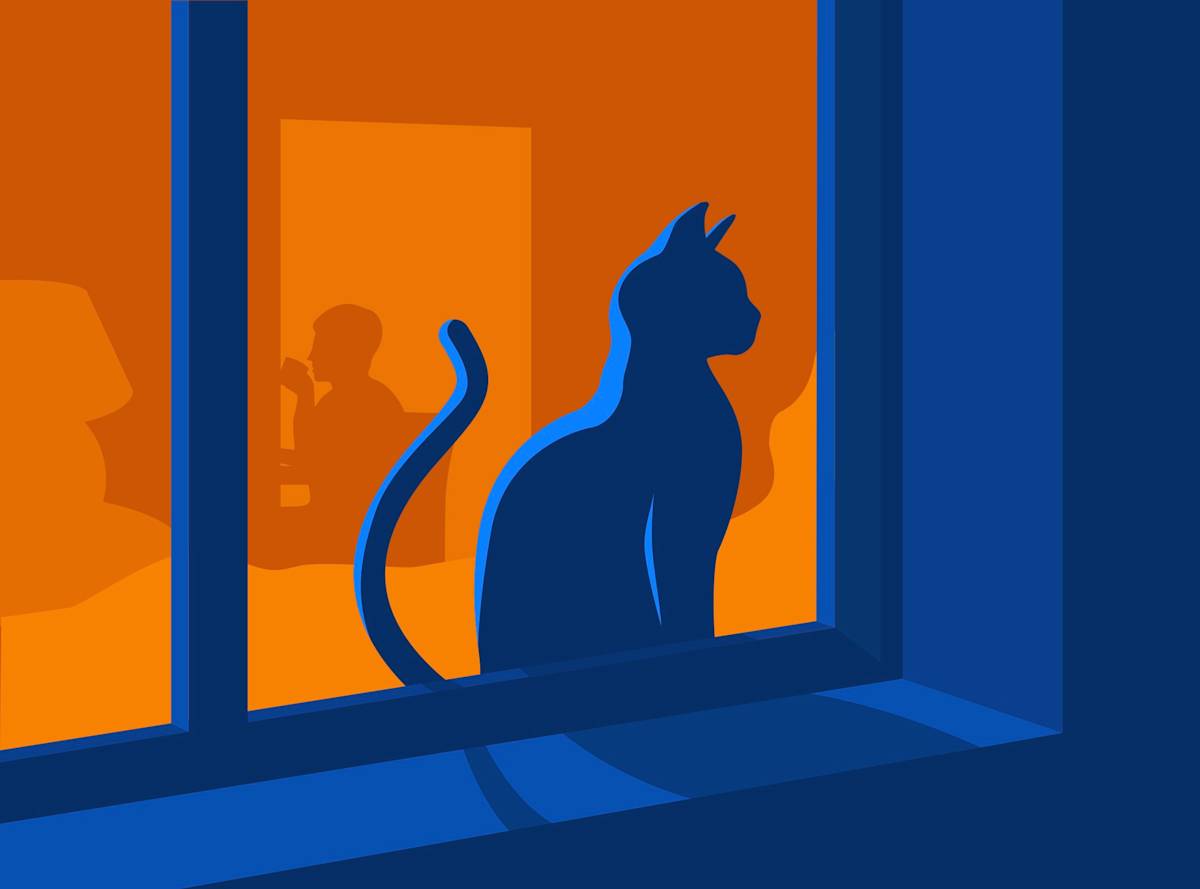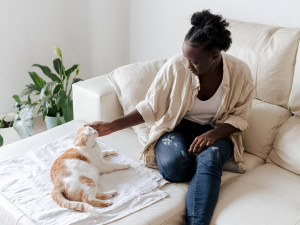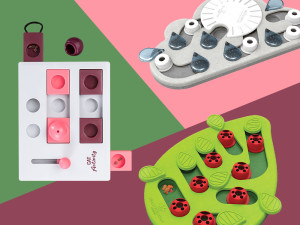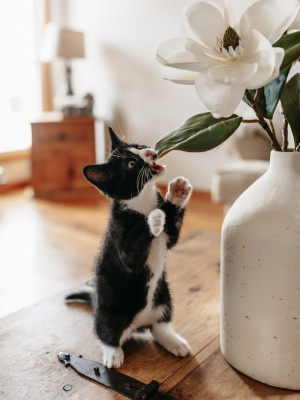This Study Says You Literally Can’t Hide From Your Cat
Happy spooky season.
You know how cats lounge around, until suddenly — out of nowhere! — they dart away from you into another room? Researchopens in new tab out of the University of Kyoto in Japan suggests that felines, long assumed to be aloof, may actually be keeping tabs on their people, even when they’re next to them. The study finds that cats can “mentally map” where their human parent is, based on where their voice is coming from.
Dr. Saho Takagi, who led and co-authored the paper, told The Guardianopens in new tab: “This study shows that cats can mentally map their location based on their owner’s voice. [It suggests] that cats have the ability to picture the invisible in their minds. Cats [may] have a more profound mind than is thought.”
Get (totally free) deals for food, treats, accessories, tech and way more pet parenting must-haves.
In the study, Dr. Takagi and team observed the reactions of domestic cats to the voices of their parents and of other people, all of whom were out of eyesight. The study focused on 50 cats, roughly half of whom live in homes; the other half live at cat cafés.
It’s an instinct
In the study, each cat was placed alone in a room with one window and two doors. Researchers equipped the space with video cameras as well as three speakers, positioned outside the window and doors. Researchers gauged feline reactions by studying the captured footage. The biggest takeaway: Cats appeared visually confused only when their pet parents’ voices — played through the speakers — seemed to teleport too quickly from one location to another.
Feline purr-veillance has roots in survival instincts. It comes in handy for hunting without a clear visual on prey and helps size up competition from nearby cats. It also helps cats triangulate the location of the human, who regularly feeds and protects them. To that end, studies have already provenopens in new tab that cats can tell the difference between a familiar voice (ie. the one belonging to a food-giver) and that of a stranger.
Keep up the conversation
Other studiesopens in new tab indicate that kittens and adult cats demonstrate about the same attachment rate to their people as human infants do to their parents. Meaning: cats can be more affectionate than we've assumed. Even if they’re not fans of hugs. “Although there was clear individual variability in cat preference,” one paper readsopens in new tab, “social interaction with humans was the most-preferred stimulus category for the majority of cats, followed by food. This was true for cats in both the pet and shelter population.”
If you’re the type of person who talks even a little too much to their pet, keep talking — it is likely a comfort to them. “Cats spend most of their time sleeping, and people often think that it's good that cats just sleep,” Dr. Takagi said to CNNopens in new tab. “But cats…may be thinking about many things.”







